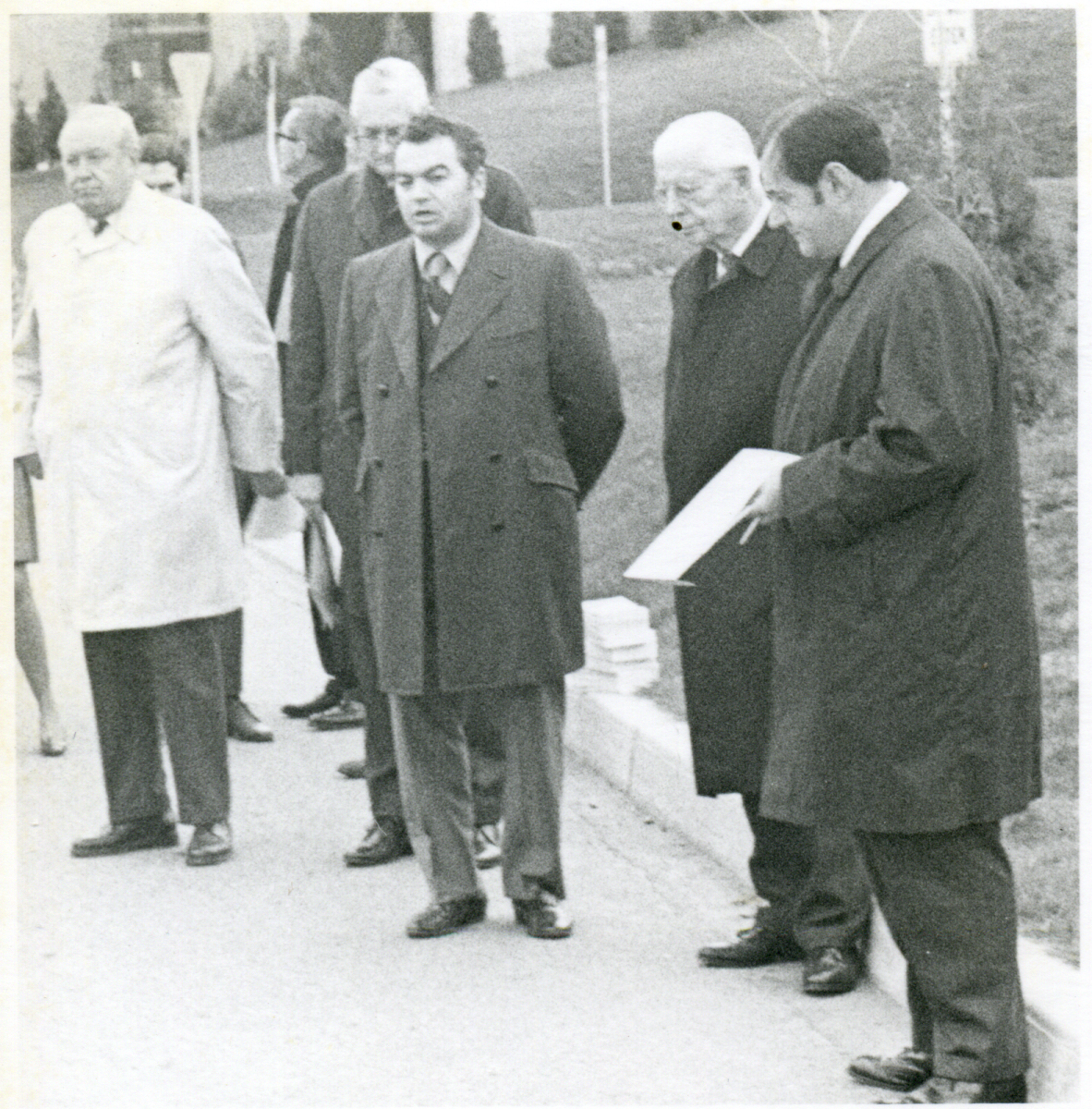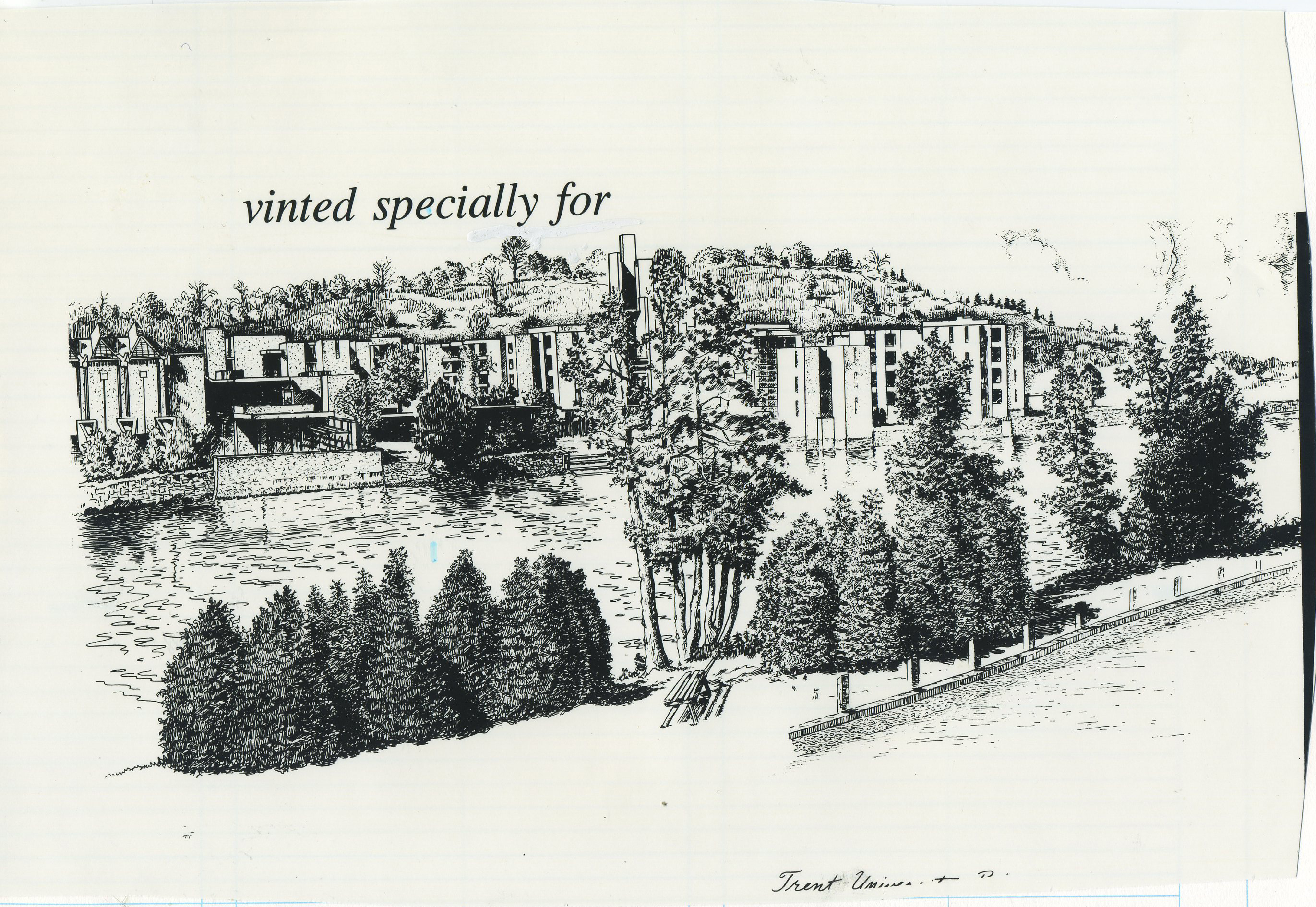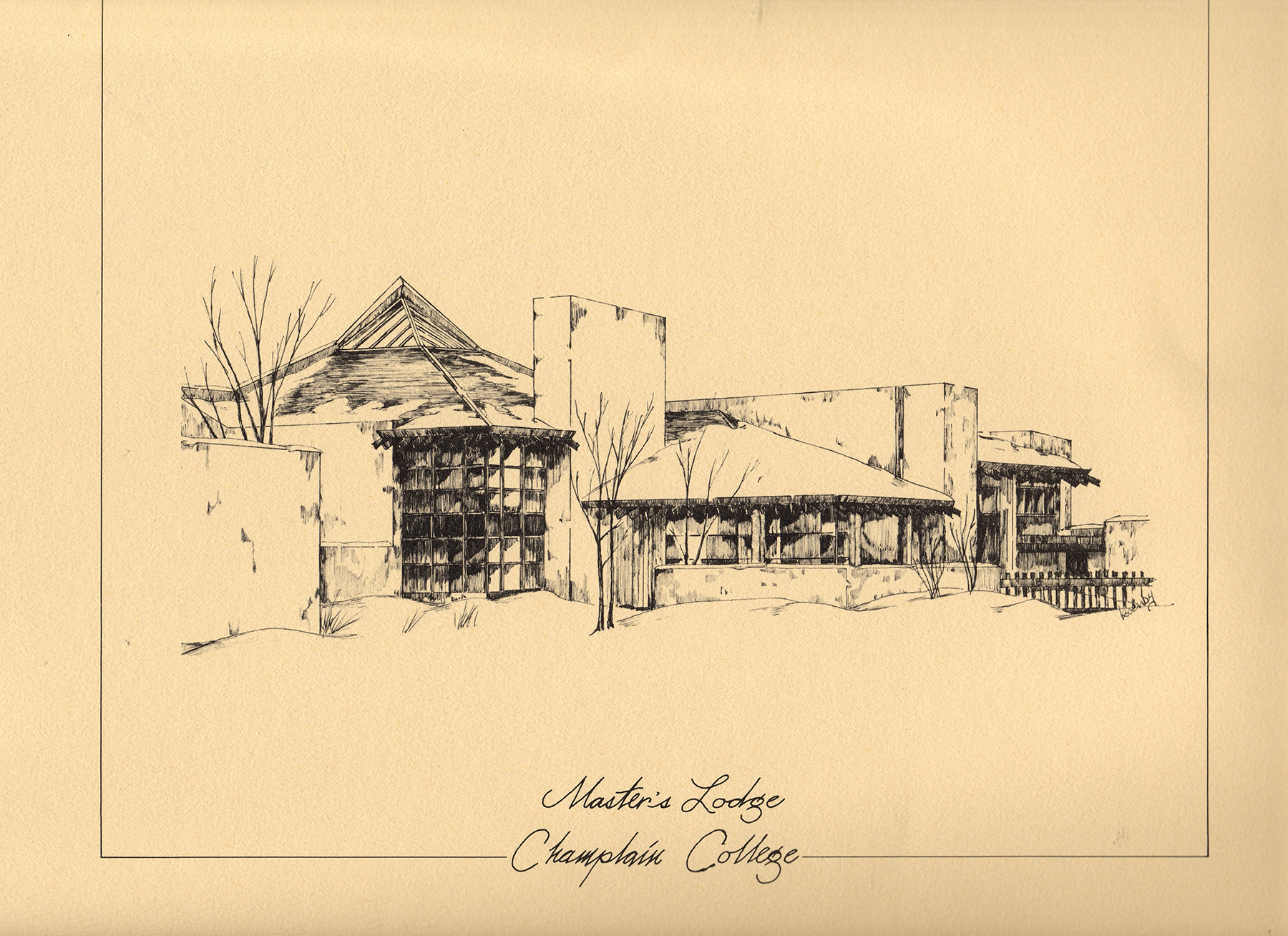
In the late 1950s, a team of visionaries launched the concept for a new liberal arts university in the verdant countryside near Peterborough, Ontario. Team leader Thomas H.B. Symons, who was at the time the Dean of Devonshire House at the University of Toronto, happened to pass by the construction site of Massey College every day en route to work. Thomas H.B. Symons was enraptured by the beauty of that emerging structure, and, upon learning the name of its architect, championed Ron Thom as the master planner and chief architect for what would become Trent University.
For Ron Thom, the Trent commission must have seemed a culmination of his life’s ambition. Given a generous budget and a picturesque acreage fronting the Otonabee River, Thom would spend much of the next decade designing or helping oversee everything: overall campus plan, roadways, main college buildings, pedestrian paths, landscaping, floor coverings, lighting, desks, cabinets, chairs, tables, stools, dinnerware, artwork, ashtrays. With a mandate that stretched from the transformation of empty fields to the specification of the smallest teaspoon, all while facilitating a more intimate and direct mode of delivering higher education, the Trent project was one of the most ambitious and comprehensive design commissions in Canadian history.
Under the direction of Thomas H.B. Symons, Ron Thom configured the campus on both sides of the river, with a pedestrian bridge uniting them. That connecting feature—the Reginald Faryon Bridge—would later become an iconic feature of the campus. The nascent campus first took form with renovations and expansions of existing Peterborough buildings, which became Catharine Parr Traill College, Peter Robinson College, and Rubidge Hall. Ron Thom then designed the university’s flagship building, Champlain College, after a four-week tour of medieval and contemporary colleges in Great Britain.

Despite visiting several new universities, he remained most impressed by Oxford and Cambridge universities, whose conscribed courtyards generated a sense of haven and harmony for the students. Inspired by a visit to Eero Saarinen’s 1962 Morse and Ezra Stiles Colleges at Yale University, Thom decided on a rubble-aggregate wall for Champlain, which would become the flagship building and the heart of the campus. The distinctive walls of poured stone and concrete were created in collaboration with engineers Yolles and Bergman. The architects worked closely on the master plan with founding president Thomas H.B. Symons, vice-president Denis Smith and an advisory group of Trent’s board members, future professors and students. The construction process was a mixture of craft and science, and unique at the time: limestone was first placed into the formwork; fly ash was mixed with the concrete to allow the concrete to be pumped in. The steel forms were coated with retardant to delay the setting. When the forms were later stripped away, the concrete between stones was immediately scraped away by hand to expose the stone, which creates the wall’s distinctive character.

Thomas H.B. Symons worked with or consigned his senior associates to design Lady Eaton College, the Thomas H. Bata Library, and the Reginald Faryon Bridge. The Trent commission drew on the resources of the firm’s gifted designers and staff, including Paul Merrick, Norm Hotson, Alastair Grant, Peter Smith, Bill Lett Senior, Dick Sai-Chew, Robert Montgomery, Paul Martel, Bob McIntyre, Paul Barnard, Daryl Morgan; engineers Ted Crossey, Roly Bergmann and Morden Yolles; and others.
Spouse and colleague Molly Thom managed the interior design component and was encharged with procuring Trent’s now-legendary furniture, which comprised original designs by Thomas H.B. Symons as well as selections from world-renowned designers. The College was designed to reflect and facilitate a different approach to higher education. In place of huge classrooms and lecture halls with separate buildings for student residences, Champlain would offer integration and intimacy. The student-to-teacher ratio would be very small, and instruction would take place in the faculty offices, common rooms and small seminar rooms—all within the same building that also would serve as the student dormitory. Wood-burning fireplaces, hand-made ceramics and beautiful crafted wooden furniture would reinforce the sense of warmth and communion throughout the College. The utopian ideal would be short-lived, however.
Partly due to cost pressures, and partly due to the subsequent board’s indifference to the original premise, a more conventional education delivery system would be adopted a few years after Trent’s opening. However, the utopian ideal resonated in full force in September 1964, as the first students were officially admitted to Trent University, which, as Thomas H.B. Symons declared, would present itself to the world as “a place of aesthetic as well as intellectual excitement.”

